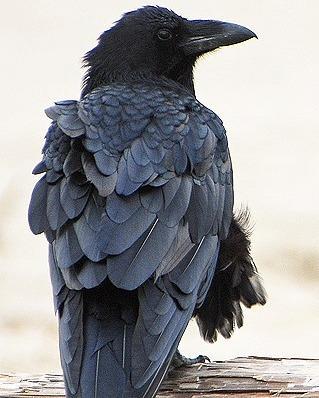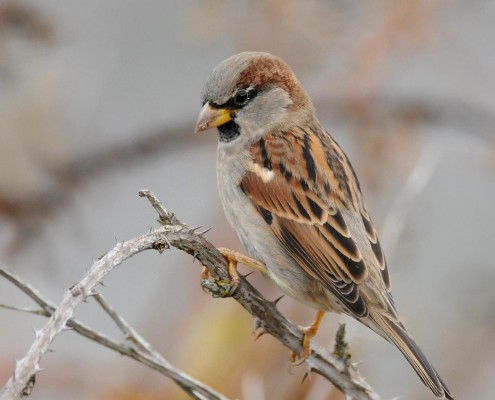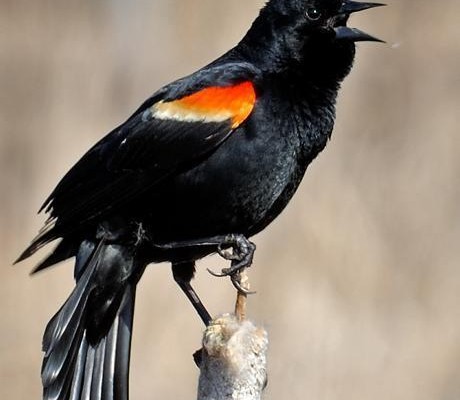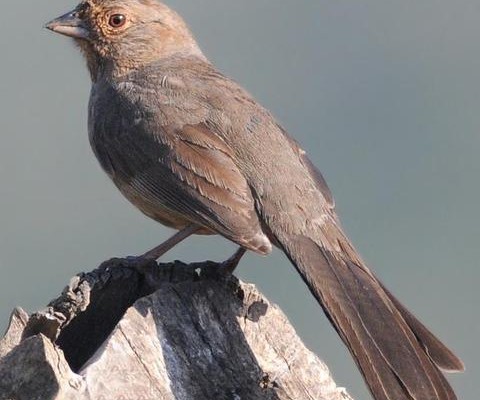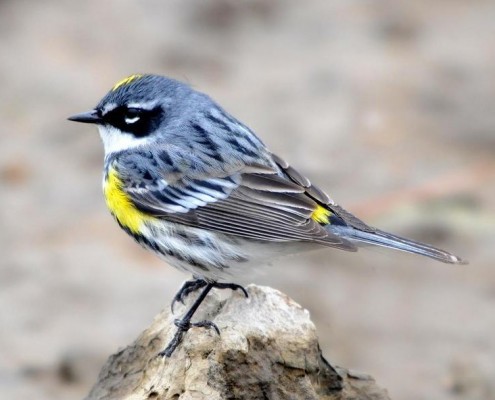Our apps, including BirdsEye and Dragonfly ID (and the upcoming Bumble bee watch and butterfly apps) will allow quick filtering by characteristics like color, family or habitat. Not only will this be an excellent feature to help novices learn, but we believe that it will also be a boon to experienced users who are traveling to new areas.
For example: Imagine stepping out of the plane in Madagascar and seeing a smallish red and gray bird in the forest. You could spend a while browsing through your guide, or just select those criteria in BirdsEye and instantly narrow your list down to just Forest Rock-Thrush.
Our goal is to create a system that is simple and generic and focuses on attributes that are easily visible in the field with the naked eye. We have tried to select generic attributes that work reasonably for every group we cover, including birds, butterflies, odes and bumble bees. Over time, we may add other characteristics that make more sense for specific groups.
To make this feature work, we need to define these attributes for every species. For dimorphic species we may also want to define these attributes separately for males and females, adults versus immatures, and in some cases for different seasons or geographies. Email us if you have questions about how that works, but the short version is that you can copy the row for that species onto two rows and assign different types (“plumages” for birds, “types” for dragonflies or butterflies) to each row and fill in the appropriate colors for each. In many species, adult males are distinctive and females/immatures are less brightly colored. We will help people differentiate females from immature males in the text, but for the purposes of filtering we would just create two types: adult male and female/immature.
As you might imagine, gathering this information for every species on earth is a huge task! We plan to start with the areas where we have the most users: North and Central America and Australia. However, our goal is to provide worldwide coverage.
Email us to get the link to the spreadsheet for the group you are interested in.
We need your help to make it happen!
BirdsEye filtering works by comparing the filtering criteria selected by the user against a database of stored filter criteria and picking the best matches. That means that we need to have criteria defined for every bird, ode, butterfly etc. … in the world. It is actually a lot of data … several million numbers. Wow!
The good news is that entering these filtering criteria numbers is pretty easy, and it only needs to be done once. Do you think you could help us by entering all of the criteria for the birds, odes or butterflies in your region, or perhaps for some place you are planning to visit? If so, you’ll be doing others a huge favor. You’ll be able to quickly filter the birds you see when you get there … and you’ll be able to tell everyone you meet that you helped build it!
Here are some tips:
- You can think of these scores as the likelihood that a novice would mention the color, size or other attribute when they told you about it: “I saw this bird today in my yard. It was black and white.” or “I saw a big dragonfly that was mostly orange with some brown.”
- We focus on the basics. These are attributes that would be obvious in the field to a novice. We are not trying to capture super fine details.
- Don’t forget that different people perceive sizes and colors differently, so try to be a bit forgiving in terms of leaving room for people who see things a bit differently that you do. For example, some people might see the belly of a House Finch as white, while other people might see it as gray. That’s fine, it can be either.
- Don’t forget the bills, legs and eyes. Example: What color is a Cattle Egret? Certainly white, but it also has some black (legs) and yellow (bill) … and even brown (a buffy neck in breeding plumage).
- Color and size scores do not need to add up to 100% (and almost never will)
- You can apply the same general characteristics to large numbers of species at the same time. For example, you could quickly set water to 100% for all the waterfowl and shorebirds, or set all of the gulls to 80% gray, 80% white, 40% for example. Then you can go through and tweak individual species as necessary. In general, the similar looking species will be sorted out by range so you can be pretty generic about the exact plumage numbers.
Color
We deal in primary colors: black, white, gray, brown, red, yellow, green and blue
- Think of this as the probability that a novice naturalist would mention various colors if they saw a species and they were describing it to you. Note: the color percentage is NOT the actual percent covered with a specific color but rather how noticeable that color is in real-world field conditions.
- Species that are entirely or mostly one color should get 100% for that color. A novice who saw one would definitely mention the color in their description. Examples: Common Raven => 100% black (plus some other colors, maybe); adult male Northern Cardinal (100% red, plus maybe a bit of black or brown); adult male Familiar Bluet => 100% blue.)
- 40-80% is for species that have a prominent color. Examples: Red for Red-winged Blackbirds; White or gray for most adult gulls; Blue for Common Green Darner.
- 10-30% is for species that have a little of a color and maybe not all the time. Examples: red for Phainopepla (the eye); Blue for Giant Spreadwing (the eye.)
- 0% is really just for species that positively have NONE of that color
You can use the values you choose to influence how the results will be sorted. For example, if two species are blue and black, but the first one has a bit more blue than the second, you might put blue = 100% for the the first and 95% for the second, which would mean that the first would appear first in the filter results.
As an example: For the breeding-plumaged Yellow-rumped Warbler on the right (a more difficult than average example), we might expect something like this:
- black: 50 (there is certainly some black)
- white: 50 (definitely a lot of white)
- gray: 70 (definitely a lot of gray)
- brown: 30 (Even though there is not much brown about this bird. Maybe some people would see the flight feathers as brown. Still, I would give it some brown. This is a bit tricky. In winter this bird will look brown so when molting it will become more brown.)
- red: 0
- yellow: 50 (lot’s of people will notice the yellow rump and sides)
- green: 0
- blue: 10 (a few will describe the gray as blue)
Size
size1, size2, size3, size4, size5
Size is a relative concept, so we have intentionally chosen not to provide definitions of what the sizes mean. Think of the $ rating in Yelp: $$$ means something different for pizza joints than it does for bars or sit-down restaurants.
That kind of approach is what we have in mind for birds, butterflies and odes. “Huge” means something different if you’re talking about butterflies or birds; and it means something different if you are in North America (Swan = huge) or Africa (Ostrich = huge!).
Think about the species that might be around for comparison, because that will influence how users (especially novices) perceive size. There are bigger dragonflies than Common Green Darners. Still in many areas Common Green Darner will be the largest dragonfly, so it should get 100% for size 5 (and probably also size 4).
For birds, think of hummingbirds and sparrows size as representing the smallest size. The biggest size is for things from geese and eagles up to albatrosses and Ostriches. Perhaps Rock Pigeons and Coots are about in the middle.
Each species should be 100% in at least one size category and often two.
Generally it is a good idea to be somewhat “forgiving” on size. People in the field are poor at estimating size, so you can give the neighboring size categories a 25% or 50% score if you think it makes sense to do so.
Habitat
Think about where you are likely to see a species. Some prefer ponds, while others prefer forest. The goal here is to help the user focus on the species that are likely to occur in the habitats they specify.
For habitat, each species should have 100% for at least one habitat, and in many cases multiple habitats. You can use 50% for habitats that a bird might use occasionally.
Resist the temptation to give it 50% or 100% for every habitat. Although it is true that a given species COULD occur almost anywhere, remember that we’re trying to help people focus on the species that are most likely in a given spot.
For aerial species, you should select the habitats that they like to fly over. For example, some hawks prefer to fly over marshes while others inhabit forests.
These designations are intended to be helpful locally. Don’t worry that “forest” means something different in Iceland than it does in Georgia or Costa Rica. The point is that it is a habitat dominated by trees.
For birds we use the following options: forest, open areas, water, urban/city or feeder. For dragonflies we flowing water, still water, meadow and forest (and we also record but don’t yet use how they perch: horizontal or vertical; vegetation or rock).
Month start and end
These columns can be used to define when a plumage starts and ends. For example, a male alternate plumage may only be relevant from April through August.
This allows us to return results that are finely tuned to what is actually possible.
However, be aware that if you set type to be visible only from April to October, users searching for it will be able to see it in March and November only if it is very good match in every other regard; and users won’t see it at all from December to February.

